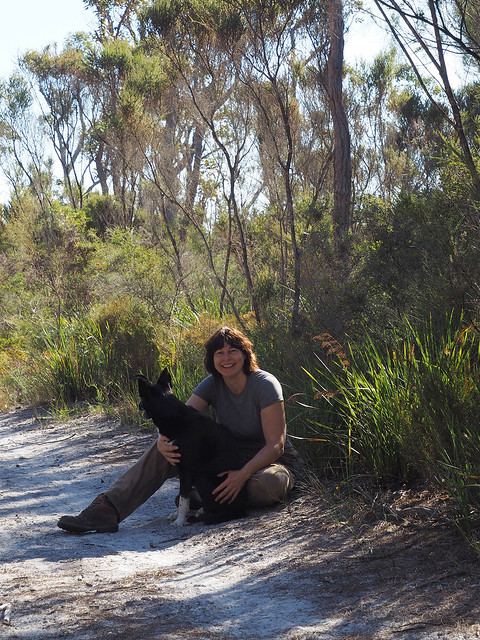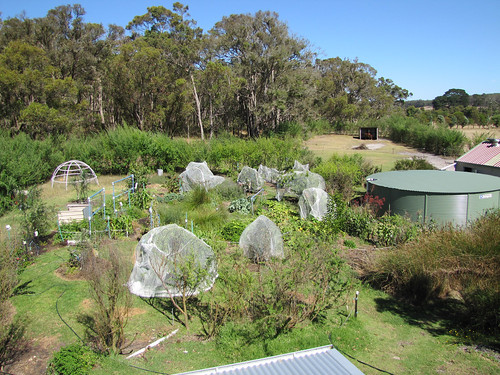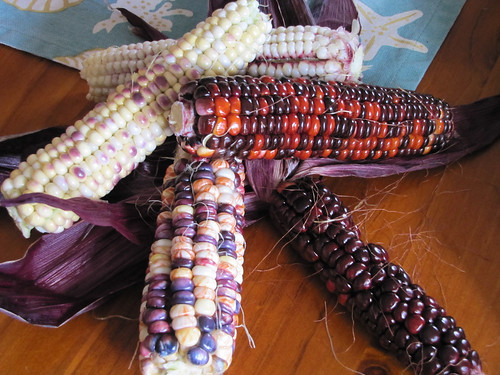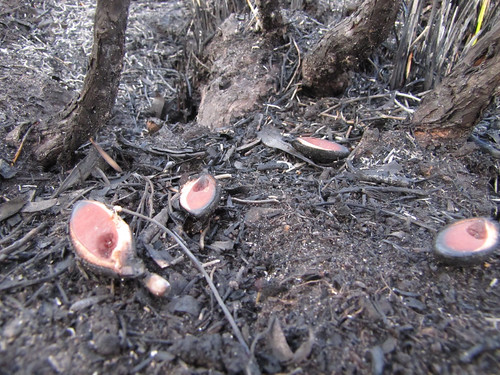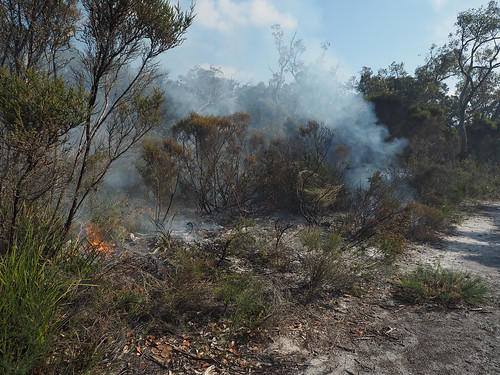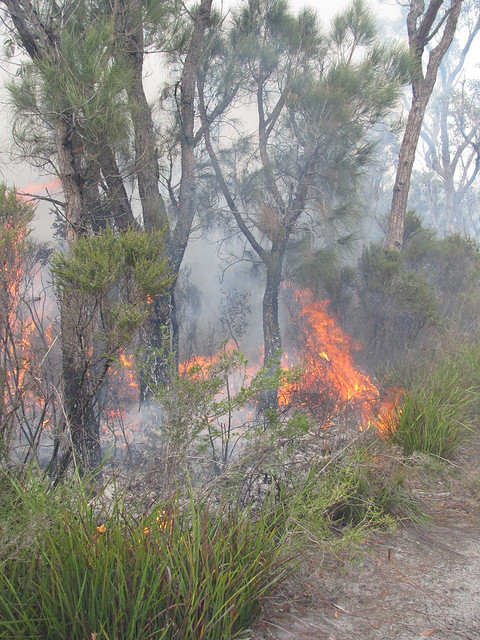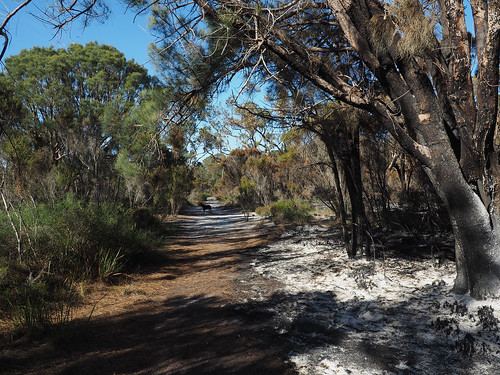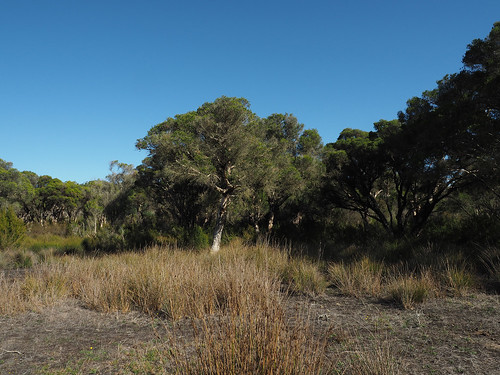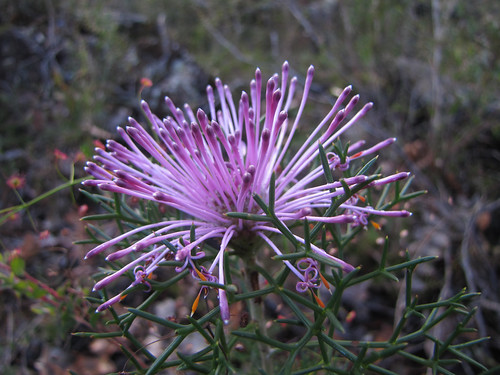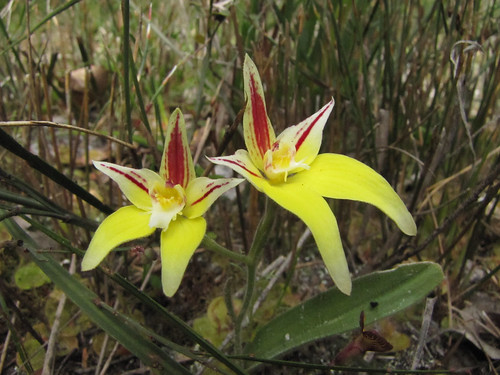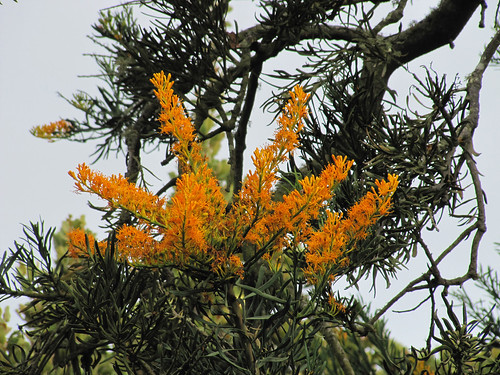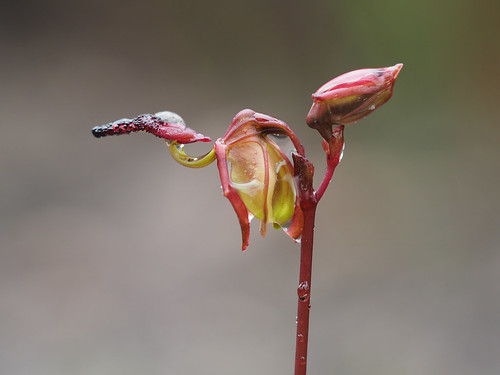The following piece was written in order to allow readers to walk in our shoes as we engage in cool small-scale mosaic burning of the sclerophyll bushland in our 50ha on-farm conservation area in the autumn while also juggling the 10ha smallholding on which we grow much of our own food using organic and permaculture methods. It is not a technical discussion of burning techniques, bushfire prevention and biodiversity conservation – I’ve written from that angle elsewhere. This time I took off my biologist hat and just wrote an immersion narrative.
May 2018
It’s five in the morning, and I am limping around the kitchen cooking Spaghetti Carbonara, the old Italian woodcutter standby. You can see why they invented it, it’s excellent fuel for hard work. A packet of spaghetti is bubbling away in a pot of water and I am busy with ham, chicken stock, white wine and cracked pepper. I toss in the drained spaghetti, add five eggs, cream and parmesan, and stir gently until the sauce is just right.
Some goes in my bowl, a little in the dog’s, who also had a rough 24 hours. Her head springs up from her sleeping shape like a jack-in-the-box, ears up, as I put her bowl on the cold wood stove to cool down a bit. She has an excellent nose and knows what’s coming. I proceed to the bedroom and settle down in the warm covers, cradling my bowl. My husband’s comatose form stirs. “There’s a mug of green tea on your bedside table,” I tell him. “I thought you could use it. I’ve been cooking Spaghetti Carbonara.”
Brett laughs. “You’re a crazy one,” he says affectionately as I tuck into my food. “At this time of the morning!” He sits up painfully. Both of us have aching muscles all over, accompanied by assorted twinges and blisters. “Is this old age?”
“No,” I reply, “It’s your mid-40s. You could be 25 and you’d feel like this after yesterday’s effort.”
He sips his tea, and then he who never, ever has a cooked breakfast but sticks steadfastly to toast, porridge or home-made muesli says, “I could use a small bowl of that myself!” and now it’s my turn to laugh. After the pasta we eat home-grown apples, closing our eyes in delight over the unbelievable flavour and crunch.
Earlier that morning, a blister on the pad of my foot had woken me up, and then my stomach started growling as well. I tried a little tuning out of the negative bodily sensations, focusing instead on the nice, soft, warm bed and being snuggled up to a lovely, warm human being, and for a while it actually worked. Then with a sigh I reluctantly left my cosy haven to slap some honey on the perforated blister and cut a good size padded band-aid to dress the area before tending to matters involving gastronomy and nutrition.
Right now, it’s time to get ourselves ready for work. I get on the mountain bike and do a patrol loop of the tracks around the four-hectare fireground with a wildly yelping, excited kelpie leading the way, while Brett dresses for a day at the office. I return with an all-clear report and send him off with kangaroo stir-fry, some more pasta, a tub of poached pears, a packet of dark chocolate and almonds, and another home-grown apple. We fondly kiss goodbye at the farm gate, the dog chases the car along the other side of the fence-line, and I set off to do morning chores.
The ancient horse needs his senior breakfast, his three friends need their rugs off, the poddies want to graze in the driveway, and the sprinklers need attending in mid-May because we have had no rain to speak of so far this year. There are dishes left over from yesterday when neither of us had anything left in the tank, and I wash four loads of laundry sequentially in our trusty energy, water and detergent saving twin tub. I make sure the broad beans and garlic I put in last week get a good soaking before rotating the sprinkler to the potato patch, and pick ripe tomatoes on the way back to hang another load of clothes into the sunshine.
There are beans soaking for Green Minestrone later, so I collect kale and silverbeet. The olives are ripening and need netting, and there are still zucchini on the vines to be grated and frozen for winter. There are new facecuts from the local mill and I’ve set up the table saw to cut one of them to go over a sharp metal edge the horses and donkeys have dug up in the shelter. Last week a horse nicked his foot on it kicking at a bot fly and we don’t want injuries. The backpack we took when doing our controlled burn has leftover chocolate, apples and drinking water in it that need tidying away. I steam multicoloured mountain corn cobs to have as a snack slathered with butter and salt, because after a still morning the north wind has kicked in, so I need to go monitor the fireground to make sure nothing flares up again. I smile at my fingertips stained purple by the corn and hop back on the mountain bike.
All is well. There are no flare-ups, just some smoke from smouldering logs, and none of those are generating embers in the wind. In this single four-hectare fireground, pieces of burnt ground alternate with pieces the flames didn’t visit, which together with the 46 hectares of bush we didn’t burn this year, and the bushland on adjoining properties, will act as refuges from which the fauna can recolonise when the new lush re-growth appears later this winter and spring.
Our fireground is surrounded on three sides by firebreaks and tracks, and on its north boundary we made a containment line to stop the fire spreading to the rest of the block. We actively put the fire out using hand rakes and shovels when it approached this line yesterday.
We had started the fire on Sunday morning. Saturday had been too windy for safe burning, and the forecast for Sunday and Monday suited the piece we needed to burn exactly. This piece was the southwestern corner of our block, which adjoins bushland on both sides. This entire area hadn’t been burnt in over a decade and was an accident waiting to happen. The understorey was dry and scrubby, with large amounts of dry built-up leaf litter and dead plant material. We’d had nightmares about this corner for a couple of years, but had been unable to burn it because of a couple of early breaks of season, so by the time the fire bans were over, everything was too sodden to burn.
2018 has been the opposite so far – we’ve had less than half the normal rainfall and the season still hasn’t properly broken. The dry summer followed by the dry start to autumn made much of this area of bush into a tinderbox – and it would only be worse next summer. We have a responsibility to ourselves, the wider community and the flora and fauna not to allow large areas to build up tremendous dry fuel loads that invite another Black Saturday. Small-scale autumn mosaic burning done right, and similar to Aboriginal fire management before Europeans arrived, is helpful both for the prevention of extreme fires and for biodiversity conservation.
We had to have the right weather for this controlled burn, so when we got it, we jumped on it. We lit up one single dry bush at the edge of the central sand track using a little bit of scrap paper and cardboard, and away it went. It is viscerally frightening how flammable much of our sclerophyll is, how loaded with volatile oils. And it’s fire adapted, but not so much to devastating red-hot large-scale wildfires that cook the very earth, as to sensible, traditional small-patch mosaic burning that allows animals to get away and plants to regenerate quickly.
The fire trickled slowly through our target area; it was a nice still day. We were astonished when dozens of frogs started hopping out of the bushland opposite to the burn and gravitating towards the fireground periphery, until we realised they were lining up to catch insects leaving the area. Away from the fringes, the flames hit some very long unburnt patches of particularly flammable vegetation – casuarinas and tall tea-trees – though these are nothing compared to paperbark trees for burning like exploding torches. Still, this drove the fire into the canopy in places, which is what we prefer to avoid when doing hazard reduction burning. This area needed to be burnt two years ago really, but the right time both times was before the legal burning time due to the early season breaks, and we don’t like to spring burn – too many birds in nests and marsupials in the pouch and burrows.
The southern boundary, which was the area of greatest concern to us – summer lightning on any of the adjoining properties could create a rapid and catastrophic multiple-property fire – burnt neatly. We had to pick a wind that didn’t blow embers into neighbouring unburnt properties. As the dark set in, we watched some red embers blow skywards like a slow-motion fireworks display, and then go out. This was good, as was the fact that a cold night was starting and a little drizzle set in as forecast. Later on, when a couple of trees turned into Roman candles and showered embers down, some arrived red at ground level but extinguished in the moisture covering the unburnt ground. You can’t have any live embers hitting dry ground outside of your target fireground, and preferably not in it either, as dealing with multiple fires becomes complicated even inside the area you want to burn.
Brett has been a volunteer firefighter for over 30 years and has been to catastrophic fires. I’m a more recent recruit and I have not. When our hazard reduction burn hit those high fuel load areas, you think to yourself, “My God, if this is how it goes in controlled conditions on a cool still autumn night, this would be hell’s own inferno on a 40 degree summer’s day with high winds!”
We patrolled all night, worked with rakes and shovels, slowed the fire down, put it out in places, removed fuel from the direction in which hot flares were heading, and didn’t go home to eat until all boundaries had gone out at 2am. At that point, the remaining fire front was narrow, gentle and trickling along in an area surrounded by burnt bush. Brett showered and fell into bed after our late-night meal, and I went back to check before retiring. At first light, when we could see clearly and before the winds arrived, we put this last line out. While the wind blows, you have to patrol constantly to check on embers from still-smouldering logs well inside the fireground, which you don’t want leaving the area. You can turn them over, pull them apart, throw water on them, but you can’t leave them unmonitored.
On one of my fireground checks today I stood in the ashes as birds sang from adjacent trees. After Black Saturday, huge tracts of land were lifeless. When I walked home with the dog, I diverted through an area we burnt three years ago because the Brown Boronias needed it to survive. Two years after the burn, the sweet scent of the boronias filled the air on our place in spring. Another year on, the understorey is higher than me in many places, but rejuvenated, lush and green. Native grasses have thrived as well and get enthusiastic attention from kangaroos.
At nightfall, I rode my horse around the patrol loop. It’s one of his regular rides, but the first one since burning off. He went along as usual until we got to the first burnt section, where he immediately did a double take and stopped to survey the scene. Horses are like that; they are very interested in changes to the landscape. I could almost hear him commenting as we completed the loop.
All is well out there, although we humans are a little worse for wear, and my metal garden rake needs orthodontic attention from a hammer after doing fireground duty. I take my hat off to the Aboriginal Australians who did all their mosaic burning barefoot, without the aid of fire trucks and PPE. They knew what to do, and when to do it, and there are voices in their communities that we can learn so much from. We too feel deeply the honour of stewarding a piece of Gondwana; to nurture this earth and be nurtured by it.
Our photo album showing more wildflowers and wildlife in this bushland area can be accessed here: https://www.flickr.com/photos/redmoonsanctuary/albums/72157632759314682
This was a “day in the life of” immersion narrative designed to let people walk in our shoes. I wrote a recent technical article pertaining to this topic in The Owner Builder No 212 April/May 2019 – Landscaping For Bushfire Safety and Biodiversity – electronic copies are available from the TOB website: https://theownerbuilder.com.au/

